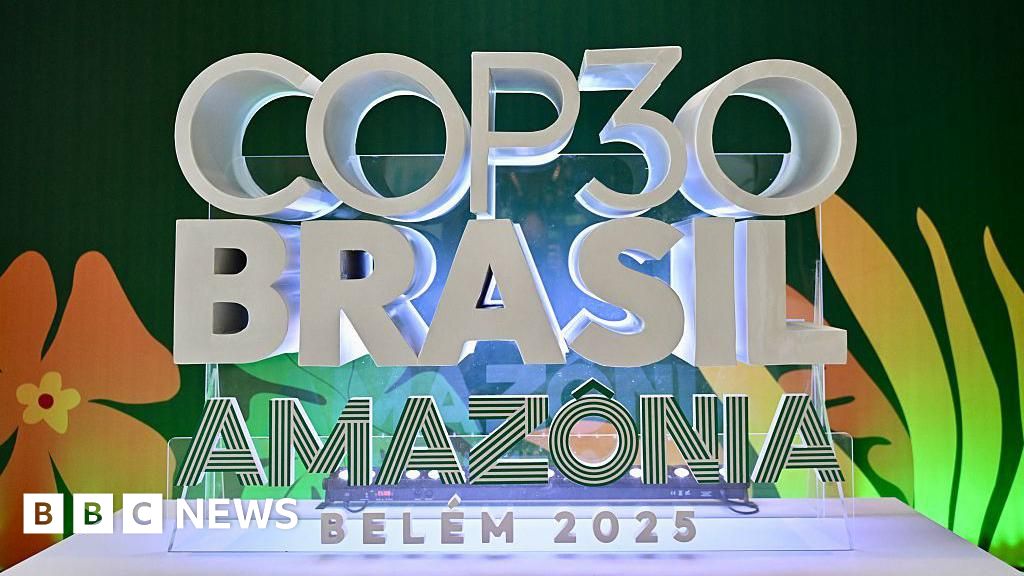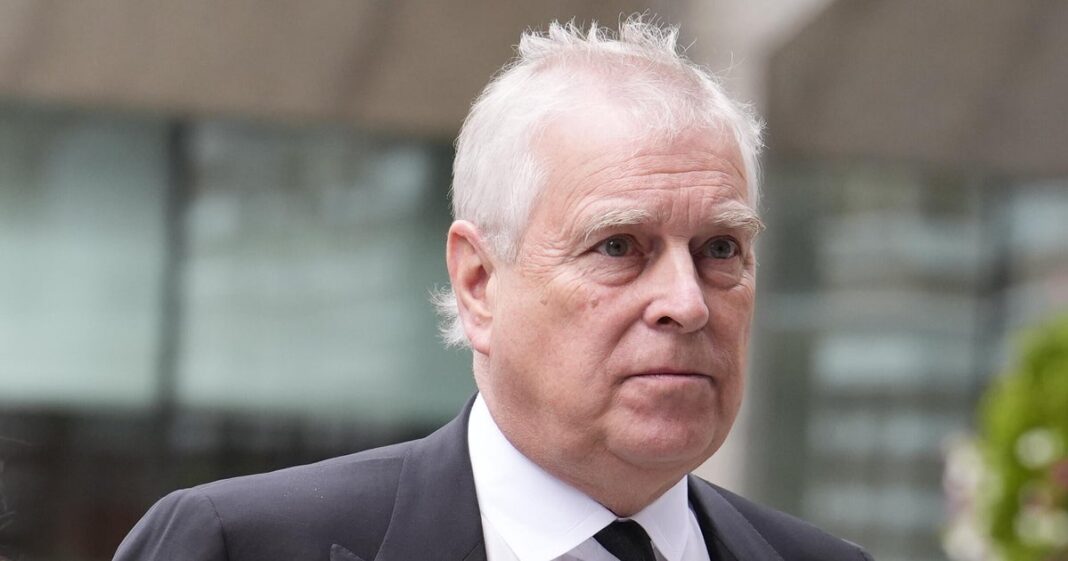Mark PoyntingClimate reporter, BBC News
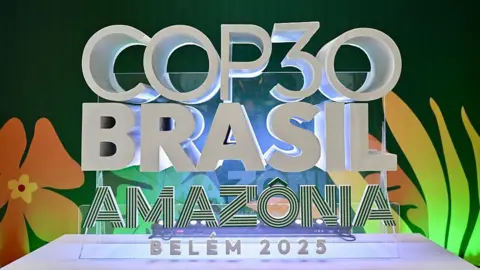 Getty Images
Getty ImagesWorld leaders will soon gather for their annual meeting on how to tackle climate change.
COP30 is taking place ten years after the Paris climate agreement, in which countries pledged to try to restrict the rise in global temperatures to 1.5C.
What is COP30 and what does it stand for?
COP30 is the 30th annual UN climate meeting, where governments discuss how to limit and prepare for further climate change.
COP stands for “Conference of the Parties”. “Parties” refers to the nearly 200 countries that signed up to the original UN climate agreement in 1992.
When is COP30?
COP30 officially runs from Monday 10 November to Friday 21 November.
World leaders will gather before the summit opens on Thursday 6 November and Friday 7 November.
The conference often overruns as a result of last-minute negotiations to secure a deal which is acceptable to all the participants.
Where is COP30 taking place?
The conference is being held in Brazil for the first time, in Belém in the Amazon rainforest.
The host nation is officially chosen by the participating countries after a nomination from the host region, which tends to rotate – similar to the way that the Fifa World Cup and the Olympic Games tend to jump between continents.
But the choice of Belém has caused significant logistical challenges, due to its poor transport links and lack of affordable hotels.
Some delegations have struggled to secure accommodation, leading to concerns that poorer nations could be priced out.
The decision to clear a section of Amazon rainforest to build a road, which will be used for the summit, has also proved controversial.
Brazil has also continued to grant new oil and gas licences in the run up to COP30. Oil and gas – alongside coal – are fossil fuels, the main cause of global warming.
Who is going to COP30 – and who isn’t?
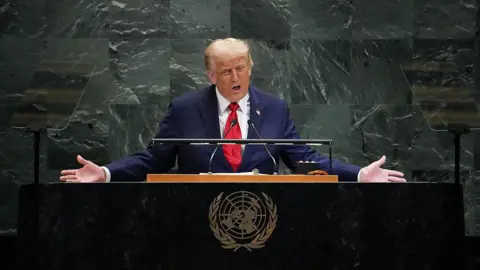 Getty Images
Getty ImagesRepresentatives are expected from countries around the globe, but many world leaders are yet to confirm their attendance.
UK Prime Minister Sir Keir Starmer will be there, as will Prince William, who will be there on behalf of King Charles.
It is unclear what form the US delegation will take.
Shortly after his inauguration in January 2025, President Trump vowed to withdraw from the Paris agreement which underpins the international commitment to tackle climate change.
It follows a similar move during his first administration in 2017, but that step was promptly reversed on former President Joe Biden’s first day in office in 2021.
China, the world’s biggest emitter of planet-warming gases, is expected to send a delegation, but President Xi Jinping is not likely to be there.
Politicians will be joined by diplomats, journalists and campaigners.
Previous summits have been criticised for the large number of attendees who are connected to the coal, oil and gas industries, which campaigners argue shows the ongoing influence of fossil fuel advocates.
Why is COP30 important?
COP30 is taking place at a crucial moment with global climate targets under significant strain.
In Paris in 2015, nearly 200 countries agreed to try to limit global temperature rises to 1.5C above “pre-industrial” levels of the late 1800s, and keep them “well below” 2C.
There is very strong scientific evidence that the impacts of climate change – from extreme heat to sea-level rise – would be far greater at 2C than at 1.5C.
But while the use of renewable energy – particularly solar power – is growing at a rapid pace, countries’ climate plans have consistently fallen short of what is needed to meet the 1.5C goal.
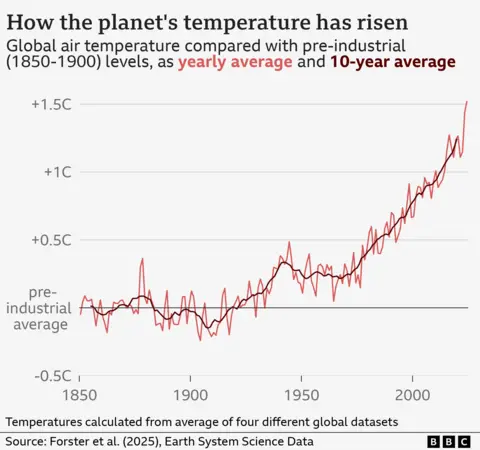
Under the Paris agreement, countries were supposed to have submitted updated plans ahead of COP30 detailing how they will cut their emissions of planet-warming gases.
But only a third of countries have done so.
Given how close the target is and how high emissions remain, UN secretary general António Guterres has conceded that “overshooting” that 1.5C target is now inevitable.
He added that he hoped temperatures could still be brought back down to the 1.5C target by the end of the century.
The UN hopes that COP30 will demonstrate an increased commitment to the process set out in the Paris pact.
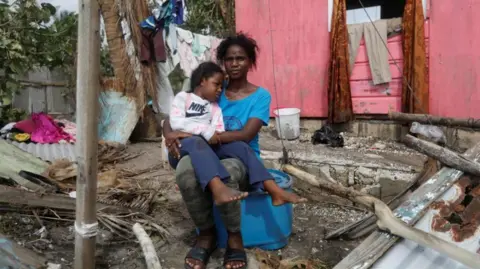 Reuters
ReutersWhat will be discussed at COP30?
Brazil hopes to agree steps to deliver commitments made at previous COPs.
As well as countries’ new carbon-cutting plans, several areas could come up for discussion.
Fossil fuels
At COP28 in 2023, countries agreed for the first time about the need to “transition away from fossil fuels in energy systems”.
But that language was not strengthened at COP29 in 2024, as many had hoped.
Money
At COP29, richer countries committed to give developing nations at least $300bn (about £227bn) a year by 2035 to help them tackle climate change. But that is far less than poorer countries say they need.
That agreement also included an aspiration to raise this to $1.3tn from public and private sources, but there have been few concrete details about this will be achieved.
Renewables
At COP28, countries agreed to treble the global capacity of renewables – such as wind and solar – by 2030.
While renewables are forecast to grow rapidly, the International Energy Agency says the world is currently not on track to meet that goal.
Nature
One new development could be the launch of the “Tropical Forests Forever Facility” – a fund to prevent the loss of tropical forests.
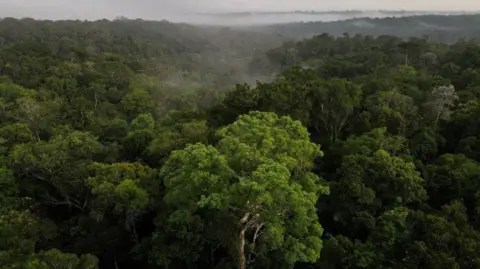 Reuters
ReutersWill COP30 make any difference?
A major step forward looks challenging this year, not least because of the effect of the Trump administration.
In a speech to the UN in September, the US President branded climate change the “greatest con job ever perpetrated on the world”, and falsely attacked the overwhelming scientific evidence for rising temperatures.
He has also pledged to boost oil and gas drilling and roll back green initiatives put in place by his predecessors.
It has been difficult to reach consensus at other environmental talks in 2025, such as the attempts to reach a first global plastics treaty in August, which collapsed for a second time.
In October, a landmark deal to cut global shipping emissions was delayed following pressure from the US and some other countries.
Some observers, such as campaigner Greta Thunberg, have accused previous COPs of “greenwashing” – letting countries and businesses promote their climate credentials without actually making the changes needed.
But significant global agreements have been reached at COP sessions, allowing greater progress than national measures on their own.
Despite the difficulties of delivering the 1.5C warming limit agreed at COP21 in Paris, the commitment has driven “near-universal climate action”, according to the UN.
This has helped bring down the level of anticipated warming – even though the world is still not acting at anywhere near the pace needed to achieve the Paris goals.

